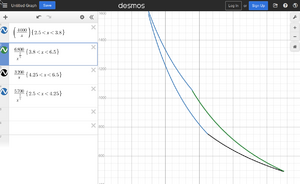Carnot Cycle: Difference between revisions
| Line 15: | Line 15: | ||
# n = ∞: isochoric | # n = ∞: isochoric | ||
# n = 1: isothermal | # n = 1: isothermal | ||
# n = γ: isentropic | # n = γ: isentropic (adiabatic) | ||
Adiabatic index <math>\gamma = c_p/c_v</math> is for the air 7/5. For the ideal gas we have | Adiabatic index <math>\gamma = c_p/c_v</math> is for the air 7/5. For the ideal gas we have | ||
<math>p^{1-\gamma} T^\gamma = C</math> and <math>TV^{\gamma-1} = C</math>. | <math>p^{1-\gamma} T^\gamma = C</math> and <math>TV^{\gamma-1} = C</math>. | ||
Latest revision as of 08:31, 17 August 2024
Introduction
- Isothermal expansion (No heat transfer / energy transfers): Heat is transferred from the hot reservoir to the gas.
- Isentropic (reversible adiabatic: Heat transfers / no energy transfer) expansion: without transfer of heat to or from a system, so that Q = 0, is called adiabatic, and such a system is said to be adiabatically isolated. Eg. the compression of a gas within a cylinder of an engine is assumed to be rapid that little of the system's energy is transferred out as heat to the surroundings.
- Isothermal compression
- Isentropic compression
Ideal Gas

Failed to parse (SVG (MathML can be enabled via browser plugin): Invalid response ("Math extension cannot connect to Restbase.") from server "https://wikimedia.org/api/rest_v1/":): {\displaystyle pV = nRT} , or more generally polytropic process: Failed to parse (SVG (MathML can be enabled via browser plugin): Invalid response ("Math extension cannot connect to Restbase.") from server "https://wikimedia.org/api/rest_v1/":): {\displaystyle pV^\gamma = C} , where is different processes depending on the value of the n:
- n = 0: isobaric
- n = ∞: isochoric
- n = 1: isothermal
- n = γ: isentropic (adiabatic)
Adiabatic index Failed to parse (SVG (MathML can be enabled via browser plugin): Invalid response ("Math extension cannot connect to Restbase.") from server "https://wikimedia.org/api/rest_v1/":): {\displaystyle \gamma = c_p/c_v} is for the air 7/5. For the ideal gas we have Failed to parse (SVG (MathML can be enabled via browser plugin): Invalid response ("Math extension cannot connect to Restbase.") from server "https://wikimedia.org/api/rest_v1/":): {\displaystyle p^{1-\gamma} T^\gamma = C} and .
- (n=1) Isothermal compression: T is constant, thus we have Failed to parse (SVG (MathML can be enabled via browser plugin): Invalid response ("Math extension cannot connect to Restbase.") from server "https://wikimedia.org/api/rest_v1/":): {\displaystyle p =C/V } .
- (n=γ) Isentropic Failed to parse (SVG (MathML can be enabled via browser plugin): Invalid response ("Math extension cannot connect to Restbase.") from server "https://wikimedia.org/api/rest_v1/":): {\displaystyle p=C/V^\gamma}
